When it comes to bulb planting, autumn reigns supreme in the minds of most gardeners. Those jaunty, jewel-coloured tulips lighting up our gardens in recent weeks? Autumn-planted. The drifts of golden daffodils, perfumed hyacinths, ghostly snowflakes and dainty wood anemones that flowered throughout spring? All autumn-planted, as are the alliums whose sculptural, lollipop-shaped flowers in shades of purple, pink and ivory will very soon burst into bloom.
In fact, so beautiful are spring-flowering bulbs that it’s easy to forget that spring-planted bulbs also bring much to the table, adding beauty and brilliant colour to the summer and autumn garden or allotment.
Best known by a long shot is the dahlia, whose showy, edible blooms play a starring role in so many flower gardens from late summer until the first harsh frosts. Planted outdoors now into its final flowering position, its fleshy tuberous root system (a type of bulb) will quickly develop lots of new fibrous roots, soon followed by fast-growing, succulent shoots from which the plant’s colourful flowers will eventually emerge.

Gorgeous but greedy, dahlias need very similar growing conditions to potatoes. For best results, give the tubers a sheltered, sunny spot and a humus-rich, fertile, moisture-retentive but free-draining soil enhanced with well-rotted farmyard manure or home-made garden compost. To keep them flowering their hearts out, work a few sprinkles of slow-release organic fertiliser (chicken pellets, for example) into the soil at planting time.
It’s also important to plant the tuber to the correct depth, so that the point where the top of that tight cluster of tuberous roots meets last year’s flower stems – the all-important spot where the “eyes” or growth buds from which the flowering shoots will emerge are found – is almost level with the soil surface. After planting, add a protective mulch of manure to protect emerging growth from late frosts (or cover it with a layer of horticultural fleece) and and then mark the location with a label. The dahlia’s young, soft growth as it emerges is also very vulnerable to slug damage so take careful precautions to protect it.
If you have space going abegging in a polytunnel or glasshouse, you can also bring dahlia tubers into earlier growth (and thus earlier flower) by placing them in shallow trays and lightly covering them with compost or soil. Keep them lightly watered and then plant them out once all risk of frost has passed, as otherwise their tender new shoots could be all-too-easily burnt.
Confusingly, the dahlia’s fleshy tuberous root system is one of several different kinds of underground plant storage structures that are all technically classified as types of bulbs. Others include corms, rhizomes, true tubers and true bulbs. What these all have in common is their ability to store enough food reserves for the plant to successfully grow and flower.
Hardy perennials
Other examples of highly-decorative summer/autumn-flowering genus whose fleshy bulbs are planted in spring include varieties of gladiolus, nerine, amarine (a hybrid cross between a nerine and an amaryllis, with beautiful results), agapanthus (African lily), lily, roscoea, hemerocallis (daylily), begonia, crocosmia, crinum, galtonia (summer hyacinth), hedychium, rhodohypoxis, tulbaghia, tritonia and Iris germanica , many of which are native to South Africa.
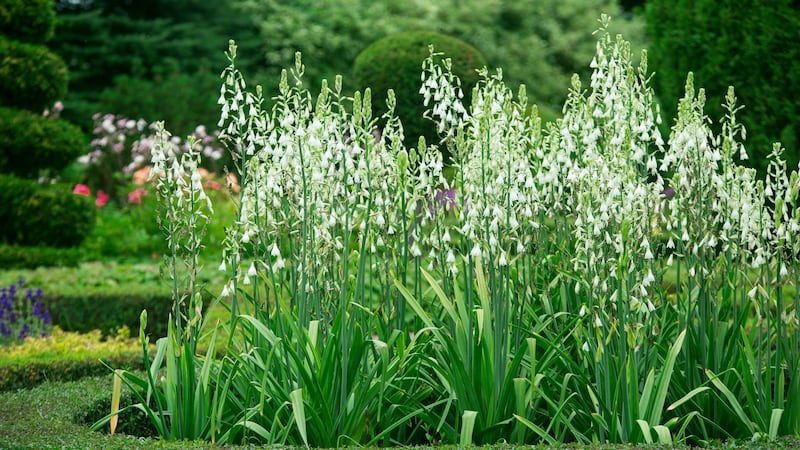
Some of these are hardy perennials whose bulbs can be left to reliably overwinter in the ground so long as they’re not left sitting in icy, sodden soil; examples include varieties of lily, hemerocallis, crocosmia (commonly known as montbretia), Iris germanica, roscoaea, crinum, dierama and galtonia.
But others are classed as half-hardy, borderline hardy or tender, meaning that they typically need a sheltered, well-drained, sunny spot in a mild coastal garden and a protective winter mulch to reliably overwinter outdoors. Along with the aforementioned dahlia, examples include tuberous begonias, hedychium (commonly known as the Ginger lily), tulbaghia, tritonia and rhodohypoxis.
If yours is a cold, wet garden where hard winter frosts are common, then you’ll need to lift these more tender bulbous plants in late autumn and store them undercover in a frost-free glasshouse or garden shed to enjoy a dry winter’s rest. Species with small bulbs can be planted into mesh pots that make it easy to lift and store them as well as to replant them the following spring.
Where to get them? At this time of year, many of these summer-flowering species are readily available to buy from good garden centres either as bulbs (but hurry) or as container-grown plants (with the latter, take care to keep any of the more tender species in a bright, frost-free spot indoors, only planting them out when all risk of frost has passed).
Others are a little harder to source but you'll find them listed in the catalogues of specialist online suppliers such mrmiddleton.com; peternyssen.com, eurobulb.nl and members of the Irish Specialist Nurseries Association (irishspecialistnurseriesassociation.com).
With so many great varieties available, where to start? Here’s some inspiration.
FIVE GREAT SUMMER/AUTUMN-FLOWERING BULBOUS PLANTS
Gladiolus papilio 'Ruby' (Sword Lily)
Stunningly beautiful spikes of large, dark-eyed, deep crimson flowers and elegant sword-shaped foliage make this clump-forming, hardy, cormous perennial a show-stopper. Needs full sun and a fertile, free-draining soil. Height 90cm.
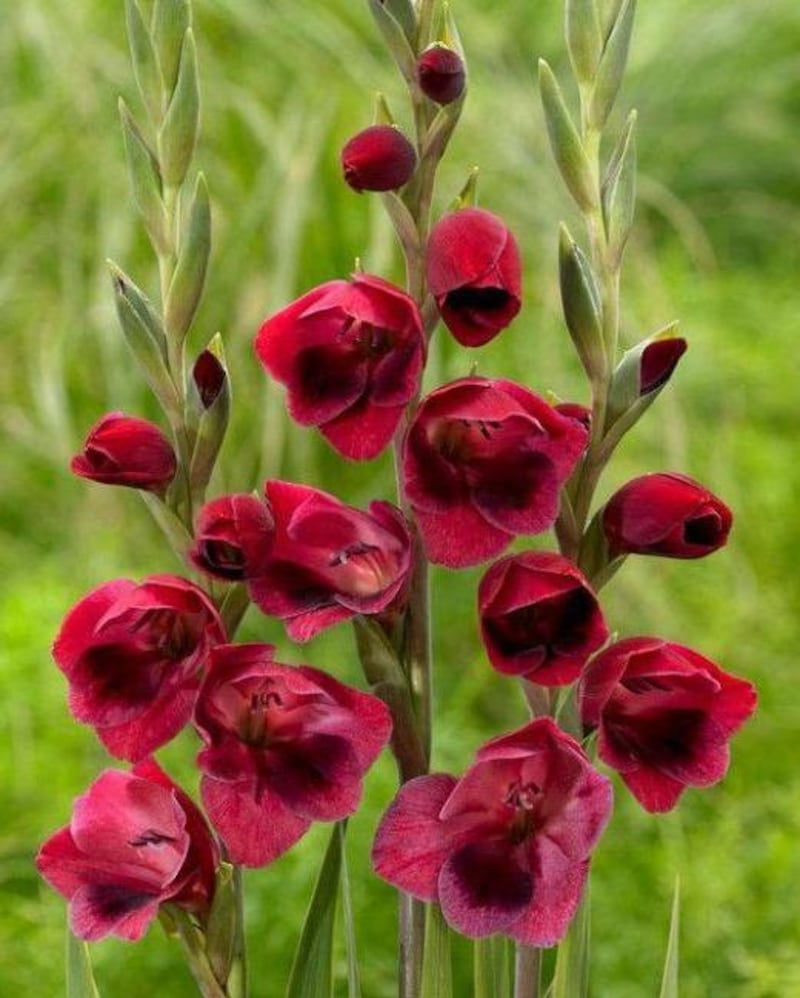
Hedychium 'Assam Orange' (Ginger Lily)
A very fast-growing, borderline hardy perennial that's perfect for a tropical-style planting scheme, with large handsome foliage and spikes of scented, orange-red flowers in late summer-autumn. Looks great grown in a large pot or tub. Needs a sheltered spot in full sun and a rich, moist soil. Height and spread of 100cm x 50cm.
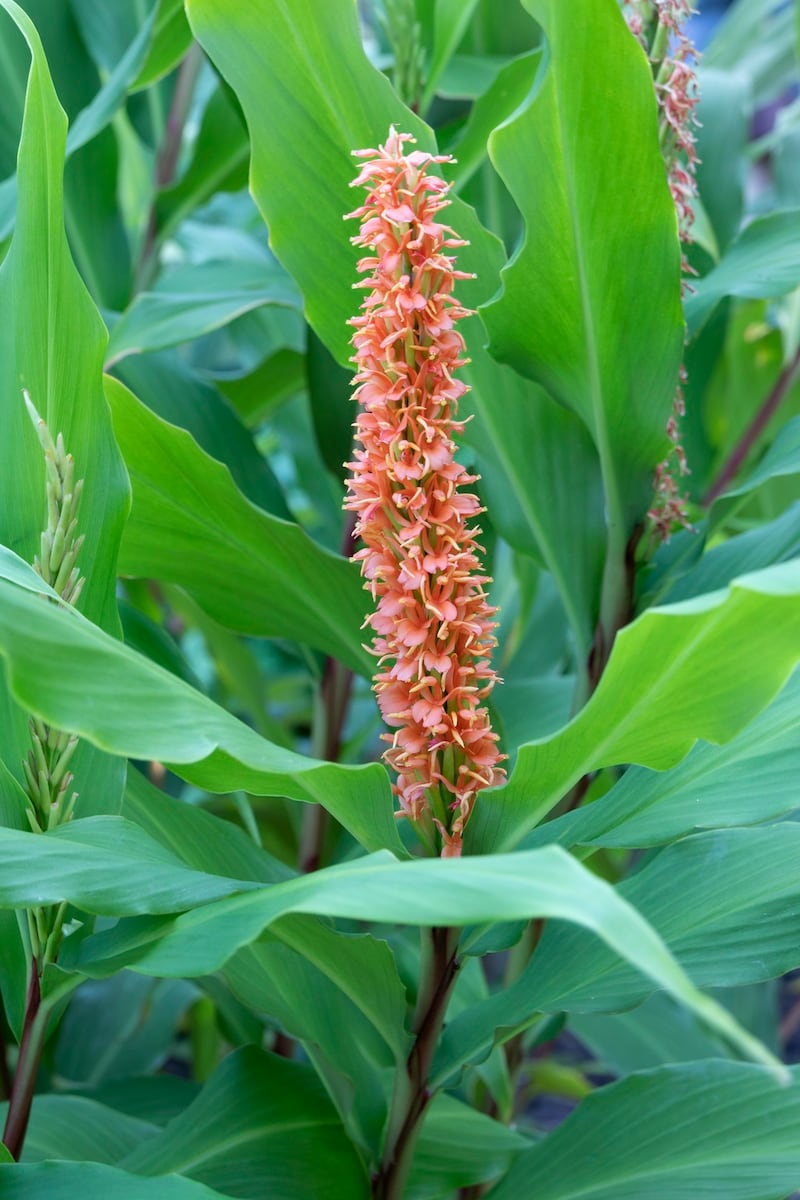
Dahlia 'Totally Tangerine'
A new variety of anemone-flowered dahlia and a great cut-flower, with large dusty pink-orange single petals surrounding each flower's tightly clustered golden-orange "eye". Needs a rich, moisture-retentive soil and a sheltered spot in full sun. Height and spread of 60-75cm.
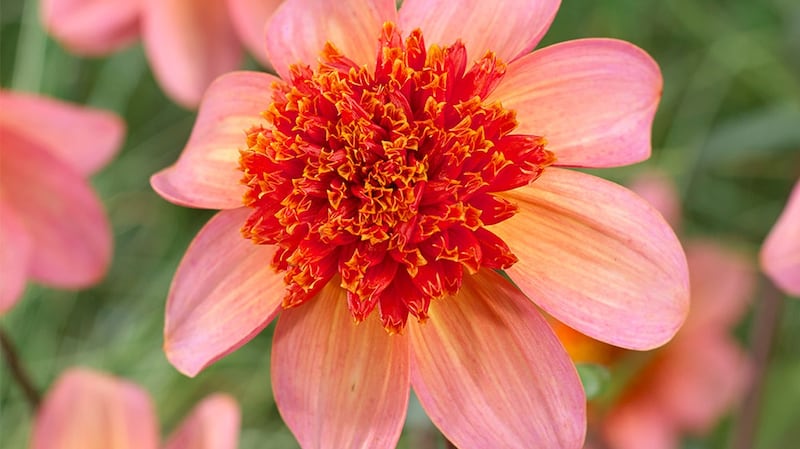
Tree lily
Think Jack and the Beanstalk when it comes to these giant hybrid lilies, whose colourful flower spikes can reach 2-3m tall. Surprisingly hardy, they like a fertile, humus-rich, moisture-retentive but free-draining soil in full sun or light shade.
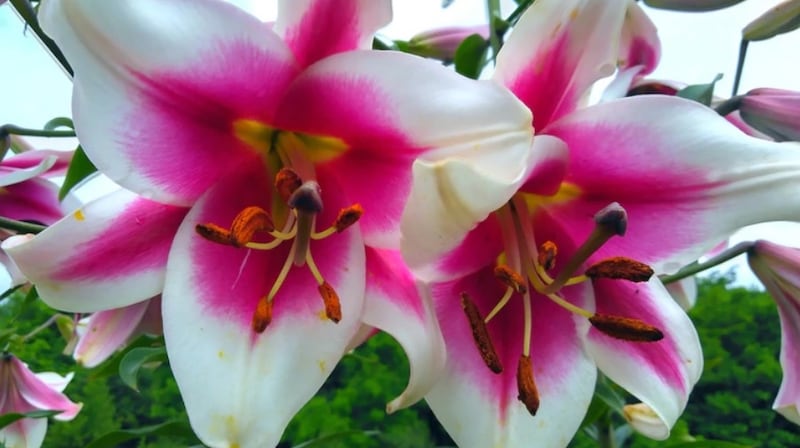
Amarine Belladiva 'Emmanuelle'
If you can give them a very warm, sunny, sheltered spot beneath a south-facing wall, amarines will reward you with a wonderful display of their exceptionally long-lasting, trumpet-shaped, colourful, scented flowers in late autumn. Given ideal growing conditions and planted shallowly, they're hardy down to minus-10 degrees. Bred for the cut-flower industry, this particular variety produces multiple stems, each laden with huge heads of long-lasting, ice-pink flowers.
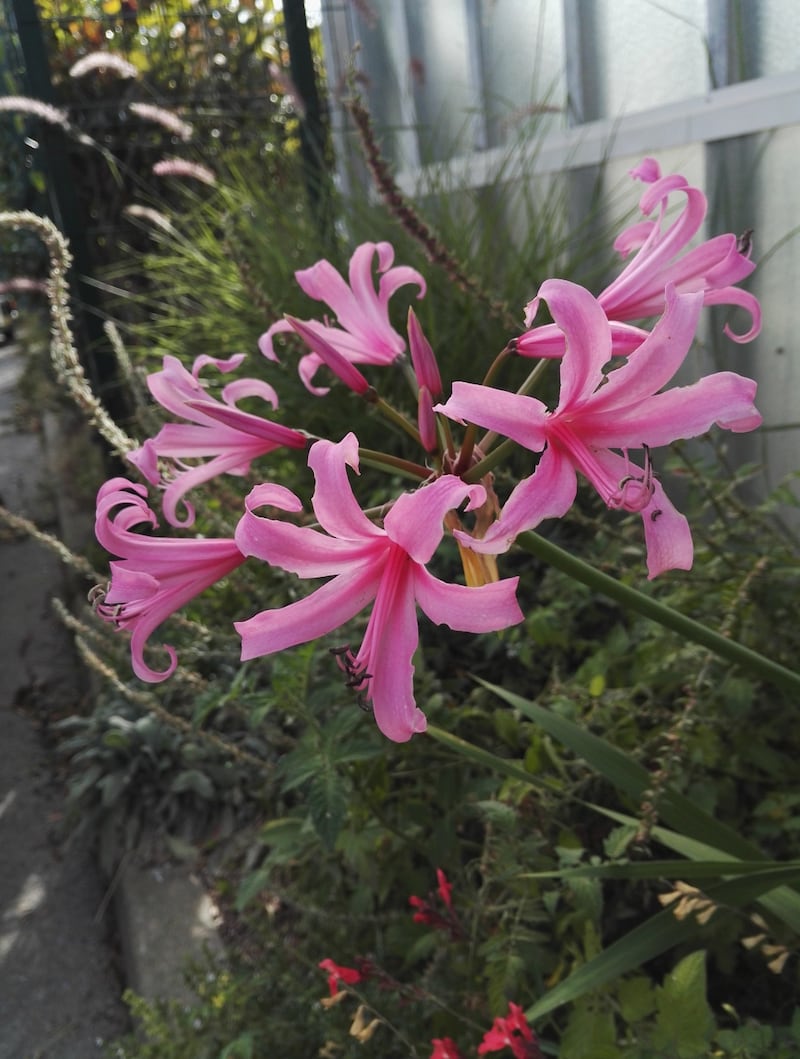
THIS WEEK IN THE GARDEN:
The fast-growing shoots of clematis can quickly get into a messy tangle at this time of year as these ornamental climbers rapidly clamber their way up walls, pergolas, trellises and through the branches of host plants. Make sure they have sufficient strong support, gently spreading out the stems in a fan shape and securing them using garden twine.
Tempting as it is, resist the urge to plant out tender bedding unless your garden is an exceptionally mild and sheltered one, as damaging late spring frosts are still possible until the end of May. Too late? If you’ve already taken the plunge, then keep a careful eye on the weather forecast in the weeks to come and have some horticultural fleece readily to hand in case you need to quickly offer vulnerable plants protection.
DATES FOR YOUR DIARY
Saturday, April 30th (1.30pm-4pm)
The Alpine Garden Society's Annual Show, Cabinteely Community School, Johnstown Road, Cabinteely, Co Dublin. See alpinegardensociety.ie
Saturday April 30th, and Sunday, May 1st
Garden Show Ireland, with talks and contributions by many well-known gardeners including Diarmuid Gavin, Klaus Laitenberger, Geoff Stebbings and flower farmers Aisling & Andy McCormick of Sow Grateful, plus flower-arranging displays by members of the Northern Ireland Group of Flower Arrangement Societies, Antrim Castle Gardens, Randalstown Road, Antrim. gardenshowireland.com
Sunday May 1st, (10am-4pm)
The Russborough RHSI Garden Show with stalls selling plants, cut flowers, artisan foods and botanic-inspired art and craft, Russborough House, Blessington, Co Wicklow. See rhsi.ie and russborough.ie
Sunday, May 8th
The Rare and Special Plant Fair 2022, with up to 40 of Ireland's specialist nurseries selling a wide range of unusual plants and offering specialist advice as well as visitor access to Fota's arboretum and restored Victorian gardens plus guided tours (booking essential) of Fota House, Fota Arboretum & Gardens, Fota Island, Co Cork. fotahouse.com, rareandspecialplantfair.ie












